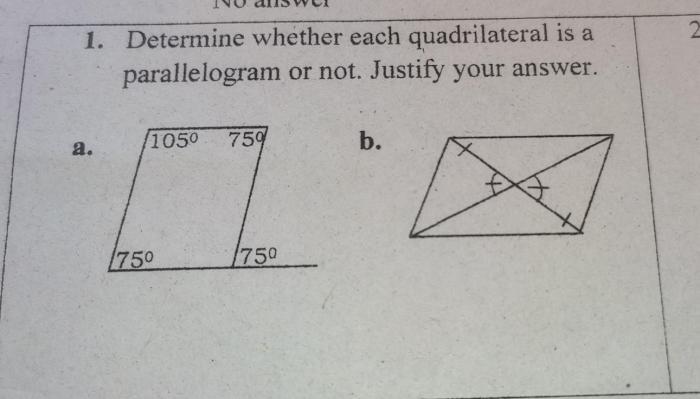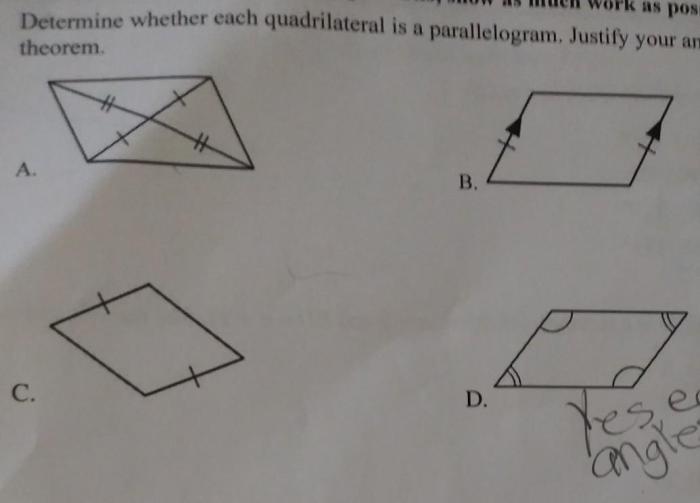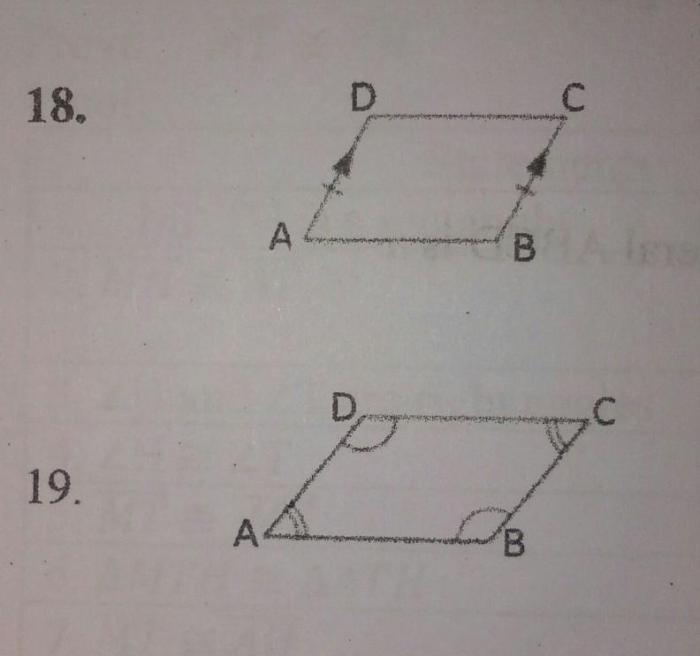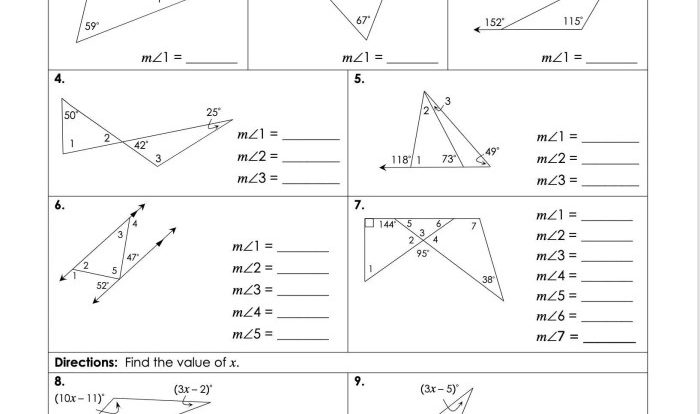Determine whether each quadrilateral is a parallelogram. justify your answer – Determining whether a quadrilateral is a parallelogram is a fundamental task in geometry. This comprehensive guide provides a clear and concise definition of a parallelogram, Artikels its unique properties, and presents a step-by-step approach for identifying parallelograms. By understanding these concepts, you will gain a deeper understanding of quadrilaterals and their properties.
A parallelogram is a quadrilateral with opposite sides parallel and congruent. This distinctive characteristic sets parallelograms apart from other quadrilaterals and gives them their unique geometric properties.
Definition of a Parallelogram

A parallelogram is a quadrilateral that has two pairs of parallel sides.
Key characteristics that define a parallelogram include:
- Opposite sides are parallel and equal in length.
- Opposite angles are equal in measure.
- Consecutive angles are supplementary (add up to 180 degrees).
- Diagonals bisect each other.
Properties of a Parallelogram

Parallelograms have several unique properties that distinguish them from other quadrilaterals:
- Opposite sides are parallel and congruent.This property is a defining characteristic of parallelograms and is what sets them apart from other quadrilaterals.
- Opposite angles are congruent.This property is a consequence of the fact that opposite sides are parallel. When parallel lines are cut by a transversal, the alternate interior angles are congruent.
- Consecutive angles are supplementary.This property is also a consequence of the fact that opposite sides are parallel. When parallel lines are cut by a transversal, the consecutive interior angles are supplementary.
- Diagonals bisect each other.This property is unique to parallelograms and is not shared by any other quadrilateral.
Identifying Parallelograms: Determine Whether Each Quadrilateral Is A Parallelogram. Justify Your Answer

To determine whether a quadrilateral is a parallelogram, you can check for the following properties:
- Opposite sides are parallel and congruent.
- Opposite angles are congruent.
- Consecutive angles are supplementary.
- Diagonals bisect each other.
If a quadrilateral has all of these properties, then it is a parallelogram.
Justification of Parallelogram Identification

When you have determined that a quadrilateral has all of the properties of a parallelogram, you can justify your conclusion by stating the properties that you have checked and the reasons why the quadrilateral has those properties.
For example, you could say:
“I have determined that quadrilateral ABCD is a parallelogram because it has the following properties:
- Opposite sides AB and CD are parallel and congruent.
- Opposite angles A and C, and B and D, are congruent.
- Consecutive angles A and B, and C and D, are supplementary.
- Diagonals AC and BD bisect each other.
Therefore, quadrilateral ABCD is a parallelogram.”
FAQ Overview
What is the key characteristic of a parallelogram?
Opposite sides are parallel and congruent.
How can I determine if a quadrilateral is a parallelogram?
Check if opposite sides are parallel and congruent.
What are the unique properties of parallelograms?
Opposite sides are parallel and congruent, opposite angles are congruent, and diagonals bisect each other.
